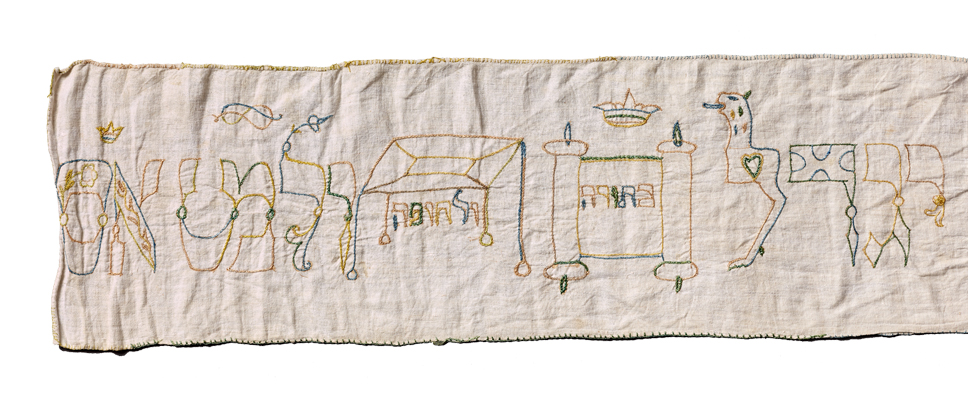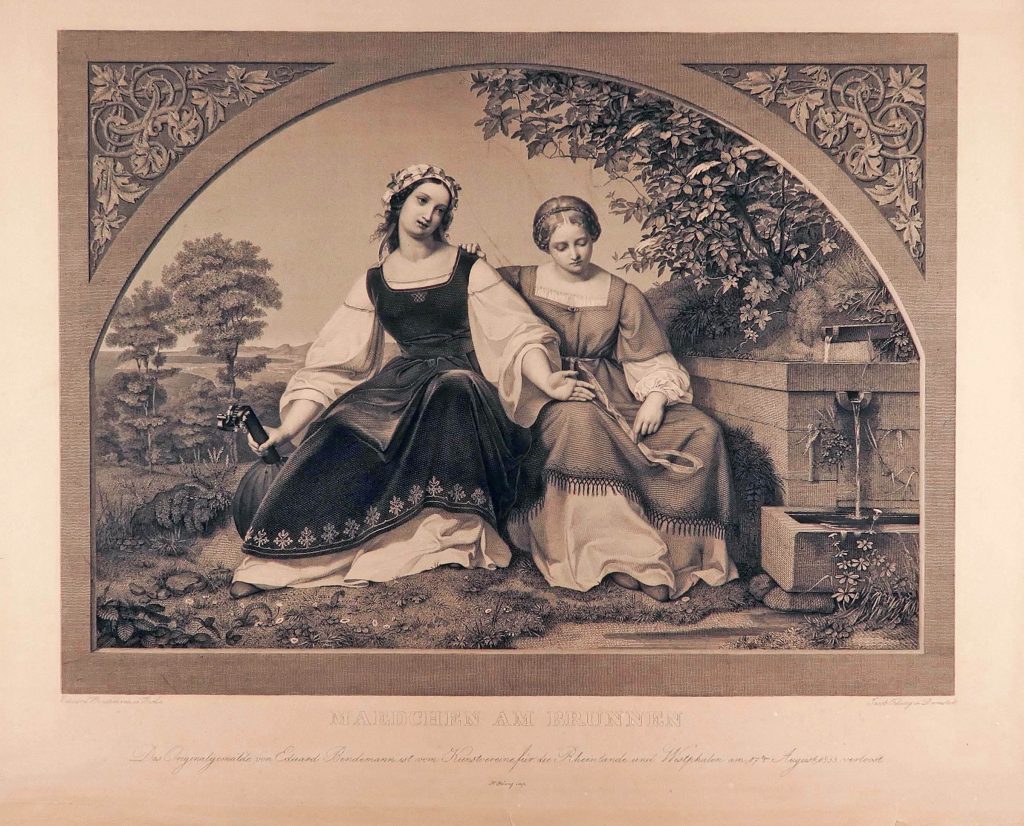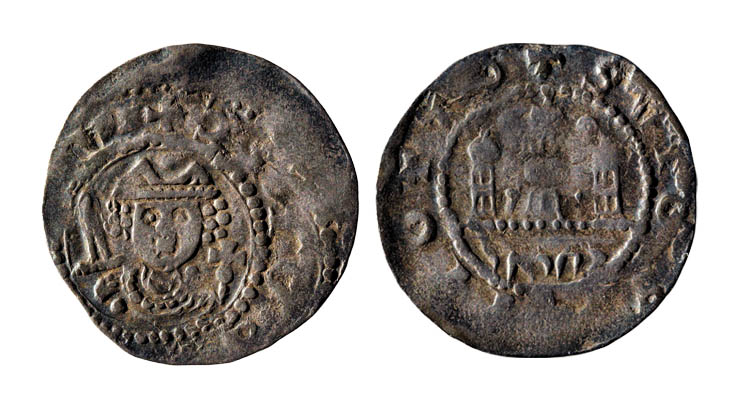
Jewish Life and Everyday Life in Germany
3 November 2021
2021 celebrates 1700 years of “Jewish Life in Germany”. With material from its own collections, the Deutsches Historisches Museum takes this anniversary as the occasion to show that Jewish life in Germany has a long and varied history. From the earliest time on, Jewish culture stamped its mark on everyday German life and still does today. Three department heads of DHM collections, each starting with a selected object, describe aspects of Jewish-German life from the Middle Ages to the present day.
Julia Franke, head of the collection Everyday Culture, investigates the meaning and workmanship of a 245-year-old “Torah banner”; Wolfgang Cortjaens, head of the collection Applied Art and Graphics, uses the example of a copperplate engraving based on Eduard Bendemann’s painting to explore the question of the form that Jewish identity took in the 19th century to become an object worthy of depiction. And in her contribution, Lili Reyels, head of the collection Financial and Economic History, shows what we can learn from the “Yechiel” coin about a Jewish minting expert in the employ of a bishop.
Embroidered Blessing – a Torah banner from the 18th century
by Julia Franke
How does a religious community in the 18th century welcome a new-born baby into the parish? With what rituals did Jewish believers in the time of the Enlightenment build ties between the individual and the community of the faithful? We find indications in the so-called Torah banner (Hebrew: Mappah, Pl. Mappot, also called a wimpel, from the Yiddish/German), which Jewish families gave to the synagogue after the birth of their sons. At an auction in 1989, the Deutsches Historisches Museum acquired two fully intact Torah banners as well as fragments from other banners.

Torah banner, 1776 © DHM
This blessing accompanied an infant into the world in 1776:
“Chaijim son Me’ir – may he have a long life – born u.g.St. [under a good star] on Monday, 9. Siwan 536 n. d. k. [according to the short year = 27 May 1776] may G[od] let him grow up with the Torah and [get to] the Chuppah and [do good] deeds.”
The blessing was embroidered in Hebrew letters on the cloth that would cover the boy when he was circumcised. The linen nappy for the circumcision ceremony (Brit Milah) was usually cut into four strips, edged and joined together on the short sides of the individual strips to form a long narrow sash, or banner. This banner was then painted or more often – as in the case of the banners in the DHM – elaborately embroidered with silk yarn.
The stereotypical blessing was the principal element of every Torah banner. It always followed the same traditional structure: It listed the boy and his father by name, the birthday according to the Jewish calendar as well as good wishes for the child based on the traditional wishes of the circumcision ceremony. The boy was to study the Torah, marry, and do good charitable deeds. Thus, the inscription expressed the parents’ wishes and hopes for the child’s happiness according to the traditions of the community. It reflected essential values of Jewish families at the end of the 18th century.
During the boy’s first visit to the synagogue between the ages of one and three years, the community took him into their midst with a special ceremony. Together, father and son presented the community with the Torah banner, which was fastened around the rolled-up Torah scroll. The banner covered and protected the Torah scroll, which was rolled to the middle on two Torah rollers and thus formed the most important and precious object of the Jewish community.
An interesting element of the abovementioned Torah banner is its varied decoration. The colours of the yarns change with the contours of the individual letters and the other ornaments. Sometimes inner drawings were inserted into the contours of the letters and filled, for example, with drawings of blossoms. Alongside floral tendrils there are also animal motifs whose attributes were supposed to have a positive influence on the boy and, analogous to the “Chapters of the Fathers” in the traditional Jewish literature, give him strength, speed and power on his journey through life: “Be as strong as the leopard, as fast as the eagle, quick like a stag and strong as the lion in order to fulfil the will of your father who is in heaven.” Thus, for example, the upper part of a letter is drawn as a leopard. Emerging from another letter is the illustration of a stag and of a bird bearing the shoot of a vine in its beak. The Torah, which is seen as divine revelation, as the word of God, is also illustrated on the banner, as is the Chuppah, the marriage canopy. The expression “with the Torah” in the blessing is embroidered directly onto the small drawing of the Torah and the expression “to the Chuppah” is written below the embroidered picture of the marriage canopy. Other symbolic images, such as crowns, can be seen above the main line of the blessing.
Current research postulates that the banners were embroidered or painted both by family members and by professional Torah scribes. This would also explain why the quality of the illustrations differs so widely. The objects in the DHM collection also reveal that both inexperienced and professional embroiderers participated in the illustration of the banners.
The blessings on the Torah banners are read – and embroidered – from right to left. Thus it could happen that the embroiderer had misjudged the length of the strip of cloth that was available and had to reduce the space between the individual letters in order to fit the whole blessing in. In the present case, a word, the adjective “good” [deeds], is missing at the end of the banner. That this was actually due to a wrong assessment of the available length is rather unlikely in view of the carefully arranged letters. The reason probably has to do with the 245-year-old history of the object’s transmission to us that lies behind the banner dedicated to Chaijim Me’ir.
The donation of Torah banners for the circumcision ceremony began in the 16th century. After the First World War it was no longer common and hardly exists today. Individual attempts to revive the practice of donating banners –for girls as well – have not been successful.
Romantic Idyll or Dialogue of Religions? Questions about a reproduction of Eduard Bendemann’s “Two Girls at the Well” (1833)
by Wolfgang Cortjaens
“The certificate of baptism is the entrée billet to European culture,” commented Heinrich Heine in 1830, mockingly as usual, on the possibilities of advancement connected with conversion from Judaism to Christianity in his epoch. The bonmot can easily be applied to the Jewish-born history and portrait painter Eduard Bendemann (1811–1889). He is the creator of the original of this copperplate engraving, which belongs to the collections of the Deutsches Historisches Museum. His parents, the banker Anton Heinrich Bendemann (born Aaron Hirsch Bendix, 1775–1866) and Fanny Eleonore Bendemann (1778–1857), a daughter of the banker Joel Samuel from Halle, had converted to Protestantism before the birth of their children, who were baptised and confirmed in the Christian faith. The legal and economic advantages that came with this conversion, but especially his talent and his good connections with Berlin cultural circles – Bendemann was the son-in-law of the sculptor and Academy director Johann Gottfried Schadow – smoothed his way to the top: first as student of Wilhelm Schadow at the then internationally highly regarded Düsseldorf Art Academy, which he headed as director from 1859 on; previously, he had taught for 20 years as professor at the Dresden Academy.
Bendemann’s oeuvre is pervaded with leitmotif-like pictorial subjects dealing with questions of Jewish identity, most clearly in his monumental history paintings such as “The Jews Mourning in Exile” (1832, Cologne, Wallraf-Richartz Museum & Fondation Corboud) as well as in a not fully realised cycle of frescos in the Dresden Schloss. The allegorical idyll “Two Girls at the Well” from 1833 (Düsseldorf, Stiftung Museum Kunstpalast) also belongs in this context, albeit not at first glance. There is a copperplate engraving of this painting among the more than 80,000 prints in the graphics collection of the Deutsches Historisches Museum. It shows two young women – one dark-haired, the other blond – sitting close together before a southern coastal landscape. Formally, the artist takes up the iconographic tradition of the allegory of friendship, practised since the Renaissance, which reappeared in the paintings of German Romanticism, including such programmatic works as Franz Pforr’s “Maria and Sulamith” (1815, Schweinfurt, Museum Georg Schäfer) and Friedrich Overbeck’s “Italia and Germania” (1811–1828), Munich, BSGS, Neue Pinakothek).

Heinrich Felsing, after Eduard Bendemann, The two girls at the fountain, Verlag Jacob Felsing, Darmstadt, 1833 © DHM
As in these two paintings, now considered iconic, the figures in Bendemann’s work are clearly recognisable as standing for opposite temperaments, cultural landscapes – and religious affiliations. The dark-haired woman, namely, can be identified as Jewish by the little Star of David embroidered on her veil. Her nonchalant posture with her hand opened towards the viewer gives her an optical dominance, which is more strongly emphasised by the blood-red colour of her velvet dress in the painting than in the monochrome engraving. Her blond companion, on the other hand, is depicted in self-contained compactness with her eyes demurely lowered, while the braid around her head recalls the old German hair style of Gretchen in “Faust”. She has her hand around the shoulder of the dark-haired girl as if with this gesture the artist wanted to represent the typological interpretation of Judaism as the basis for its reception and a fixed component of the Christian canon. It is said that the two young women who sat for the painting were Fanny Hensel and Rebecka Dirichlet, sisters of the composer Felix Mendelssohn-Bartholdy, who was a friend of Bendemann’s.
The close affinity of the two religions expressed in the complete harmony of the conflated pair of girls – evident in the symbol of the water – was not only reflected in the biography of the painter himself, but also anchored in the discourse of historians of religion and in the Bible exegeses of the time the picture was painted. This interpretation is corroborated by the fact that Bendemann often enriched his paintings dealing with Jewish subject matter by adding motifs from Christian iconography. To be sure, the creative solution does not entirely resolve the tension of the relationship between the religions; rather, it remains vague with regard to the intended statement. It is therefore hardly surprising that, unlike the reaction to Bendemann’s history paintings on topics of Jewish emancipation, the confessional aspect in the reception of his “Two Girls at the Well” was never in the foreground of the discussion. In the form of engravings, the painting achieved great popularity as a sentimental idyll in the reproduction-smitten 19th century.
Heinrich Felsing made the earliest engraving shown here in 1833, based directly on the original painting, which had been brought to his atelier for this purpose on behalf of the art association “Kunstverein für die Rheinlande und Westfalen”, then the largest bourgeois art institution in Prussia. To what degree it can also be interpreted as the offspring of the “successful” assimilation of a Jewish artist remains to be debated.
Coins as evidence of German-Jewish history as seen in the example of the Yechiel
by Lili Reyels
From the Early Middle Ages, coins were a medium of exchange between Jews and Christians. It is part of the everyday history of Jewish life in Germany that individual Jews worked in cooperation with Christian rulers as financial experts or as mint masters (Münzmeister).

Würzburg, episcopal pfennig with the name of the Jewish mint master Yechiel Mint authority: Bishopric Würzburg, Bishop Otto von Lobdeburg; nominal value: Denar; Date: 1207–1223; site of mint: Würzburg © DHM
The pfennig with the inscription Yechiel (or in German Jechiel from the Hebrew) provides a certain amount of information about these interactions in local economic life. No document has come down to us that precisely describes the relationship between the authority entitled to issue coins as stipulated in the “minting privilege”, and the mint master who produces them. Nevertheless, the episcopal coin is an instructive example of the direct connection between the Christian mint authority and the Jewish mint master as depicted on an object: on the front side of the coin is a mitred bust portrait of the mint authority, Prince-Bishop Otto von Würzburg (active 1207–1233). The two attributes of the bishop, sword and cross-staff, symbolise the secular and religious power in his hands. The reverse of the coin shows three towers. They probably refer to a stylised depiction of a city or of churches. Below is the name of the mint master Yechiel in Hebrew letters.
Yechiel bar Shmuek – his grave is located in Würzburg – is cited in medieval sources as the master of the mint between 1207 (the first year of Otto’s regency) and 1210 (Yechiel’s death). Otto I von Lobdeburg was elected Bishop of Würzburg in July/August 1207. His representative bearing and his political commitment as imperial prince evidently placed a heavy burden on the budgetary resources of the prince-bishopric, although no evidence of a direct effect on the minting of coins by Yechiel has survived.
The fact is that there are relatively few examples of the kind of mintage of the so-called Yechiel coin in the German sphere in the High Middle Ages. It can be assumed that the Jewish coin expert who is explicitly named there was a relatively influential figure at the time.
There are few sources. What message did the bishop wish to spread with this mintage about himself, his rule and his relation to the Jewish mint master? We can only speculate that the coin production of the Yechiel not only had a financial function, but that it also supported the reign of the sovereign or authority as a political instrument. It is possible that the naming of the Jewish mint master on the coin was supposed to make the location of Würzburg more attractive economically. Through the connection with the Jewish mint master, the intrinsic value of the coin was underscored.
Literature
Haverkamp, Eva: Jewish Images on Christian Coins: Economy and Symbolism in medieval Germany, in: Philippe Buc, Martha Keil, John Tolan (eds.): Jews and Christians in Medieval Europe. The Historiographical Legacy of Bernhard Blumenkranz, 2015
Leschhorn, Wolfgang: Mittelalterliche Münzen, Bd. 2, Braunschweig 2015
Ruß, Hubert: Die mittelalterlichen Münzen des Hochstiftes Würzburg. Münzgeschichte und Katalog der Prägungen von ca. 900 bis 1495, München 2021